Frontier Centre for Public Policy
Cowering before carbon

From the Frontier Centre for Public Policy
Despite turning this back this spring, South Dakota continues to be under attack by a freshly born green corporation, Summit Carbon Solutions, funded by China’s Belt and Road initiative, and you, through the Green New Deal provisions buried in the last debt ceiling deal, to pipe “carbon,” from the oil fields to some obscure part of the Dakotas and bury it. The “people” may “rise up” and demand it be shuttered, and all they do is crawl away and try again.
There can be no more stupid waste of money than this. But even some of our bravest politicians, including Kristi Noem, Pierre Poilivere and Danielle Smith in Canada cower before the almighty (anti-)carbon lobby and rabbit on about sequestering it. It is an industry into which thieves flood because it means you loot the public purse at the beginning through Green New Deal giveaways, and then for all perpetuity because of the tax advantage. People have been so scarified by the word, they do not know what it means anymore, they nod enthusiastically.
So let’s refresh: carbon = carbon dioxide. Plant food. Your outbreath. The thing that makes life on earth habitable. The thing they are trying to introduce into Mars to make it habitable. In order to terraform Mars, you need carbon dioxide.
A policy researcher friend tried to track down the annual billions, trillions over the last thirty years, that the U.N. and its various satellites have given of your money to “climate change” mitigation outfits in the Global South. The money vanishes, nothing happens, it’s stolen. She google-earthed one heavily PR’ed outfit, only to discover that it didn’t exist, just a pile of sand. These projects are payoffs to an army of activists placed at every weak point in the system. If the projects exist, they don’t work. Both the Guardian and Harper’s have done extensive work on the fraud of “climate mitigation.” Carbon sequestration is a scam meant to steal public money.
Yeah, this oughta work.
This time, Kristi Noem is facing down an activated people who are fit to be tied, protesting and signing petitions. This is generally taken as “the people’s voice” in the enviro business and must be obeyed. But not, apparently, when you are fighting “green.” This time, Summit Corporation is barreling through people’s farms, breaking into their barns, threatening ranchers with armed guards, and generally behaving like the WEFer army Trudeau sent to brutalize the truckers. This is a new iteration from the One World Government, anonymous Kevlar-coated mercenaries in the heartland.
So it is that the carbon dioxide pipeline in North Dakota is receiving rapid approvals and aggressive eminent domain clearing overturning the years, even decades it takes to clear a pipeline. The first thing Biden did was cancel the Keystone XL pipeline. It was protested by the activist army that moves into any hot spot, the leaders of which are paid well to lead the chaos. But in this instance, the carbon pipeline is being protested by actual residents fearing actual harm. Co2 is an unstable gas, unlike oil and natural gas. Co2 pipelines explode and kill people. They blow up in part because the technology is not sorted out, unlike petroleum engineering. But never mind! It’s virtuous. It’s fabulous, it must be done, whether you like it or not.
I know! Let’s overturn democracy. Writes Pipeline contributor Steven F. Hayward in the Claremont Review of Books:
The most overwrought, assertive climate change activists have a “transformative” agenda to halt and reverse global warming. The problem is that there’s no evidence voting majorities in any modern democracy are willing to be transformed by Green New Deals or other, even wilder schemes. And if the people reject the climate agenda? There must be ways to enact it despite them. There may even be ways to insist that this thwarting of the popular will is, in fact, a more noble rendering of democracy than mere government by consent of the governed.
He quotes Ross Mittiga, the author of “Political Legitimacy, Authoritarianism, and Climate Change,” asking whether we must sacrifice democracy to save the planet:
Satisfying this standard may entail elevating the status or power of experts in the political process by, for instance, affording them a salient consultatory role or even some kind of veto power over legislation…. One can imagine a “Supreme Court of Climate Experts,” tasked with evaluating, modifying, or striking down legislation to the extent it exacerbates the climate crisis or contributes to other grave forms of environmental destruction.
Observes Steve: “This hardly differs from the parade of authoritarian horrors offered elsewhere in the article.”
Oops.
Alas, all over the U.S., activists are attempting to override both political and judicial process placing their judgment above democratic process, and their pet judges agree. Usually local farmers, ranchers, rural businessmen and women are rolled flat by out-of-state lawyers and money from movie stars, but this time, the victims have constitutional lawyers. The South Dakota Freedom Caucus is fighting back and Gov. Noem is caught. Approving this pipeline will mean money for her coffers from Summit, jobs, albeit temporary; no doubt, federal funds will be held back until she approves it. You can read the Caucus’ extensive legal argument here.
Even the Sierra Club thinks carbon capture is fraudulent:
The fact that the 45Q tax break for carbon capture and sequestration specifically states that enhanced oil recovery [EOR] counts as sequestration means that these companies could get paid twice for the same carbon— first, via the tax break for capturing and shipping it, and again when they sell it for EOR. “The bottom line,” says [Richard] Kuprewicz, “is if you’re trying to get CO2 in the atmosphere to reduce global warming, but you’ve created this huge market incentive to drive and generate more oil recovery, that may be in conflict with getting rid of CO2 in the atmosphere… We’re getting ahead of ourselves on pipelines,” he says. “For billions of dollars you can make smart people do incredibly stupid things.”
Carbon capture is a gold rush, the gold being public money. Exxon Mobil just bought a carbon capture company. Certainly it knows of the dangers and inefficacy, but such virtue signaling makes them look good. Summit Corporation is another dishonest outfit prospecting for free public money.
Opposition mounts. The South Dakota Public Utilities Commission has announced it will hold hearings on their pipeline in September. Three days ago, Daniel Horowitz of The Blaze asked why Noem was dragging her heels about calling a special session of the legislature to deal with the “carbon-capture” threat.
This problem has been festering for quite some time, it’s just that the governor thought she’d be able to quietly skate by enabling Summit Carbon Solutions and Navigator CO2 to do the dirty work while not overtly endorsing their project. Noem’s reluctance to call a session comes on the heels of her refusal to support the existing bill in the regular session. The governor is pretending like this issue is just beginning and that lawmakers need to send some new legislation for her to review. But she is very familiar with House Bill 1133, introduced by Rep. Karla Lems. There’s nothing to review; it’s a one-paragraph bill. It simply makes it clear that eminent domain can only be used for a pipeline that actually produces a public good, not merely captures carbon. Done.
Can’t we just box it and ship it?
In Illinois, through which carbon pipelines are planned to flow, a state senator has proposed a moratorium on carbon capture pipelines to address safety concerns.
McClure said the pipeline issue was first brought to his attention by some of those who live along the path of Heartland Greenway. He said he was concerned about the potential for a pipeline rupture similar to one that happened in Satartia, Mississippi in early 2020, when 45 people were hospitalized and 200 were evacuated. The carbon dioxide sucked the air out of the surrounding area and caused gas-using vehicles to fail, according to reports.
“When you have a pipeline that’s that big [and] that will stretch across so much rural area, how on earth would emergency folks be able to get to a rupture in time to help people?,” McClure said.
We have to stop throwing our future into the great green maw.
Elizabeth Nickson is a Senior Fellow at the Frontier Centre for Public Policy. Follow her on Substack here.
Business
It Took Trump To Get Canada Serious About Free Trade With Itself

From the Frontier Centre for Public Policy
By Lee Harding
Trump’s protectionism has jolted Canada into finally beginning to tear down interprovincial trade barriers
The threat of Donald Trump’s tariffs and the potential collapse of North American free trade have prompted Canada to look inward. With international trade under pressure, the country is—at last—taking meaningful steps to improve trade within its borders.
Canada’s Constitution gives provinces control over many key economic levers. While Ottawa manages international trade, the provinces regulate licensing, certification and procurement rules. These fragmented regulations have long acted as internal trade barriers, forcing companies and professionals to navigate duplicate approval processes when operating across provincial lines.
These restrictions increase costs, delay projects and limit job opportunities for businesses and workers. For consumers, they mean higher prices and fewer choices. Economists estimate that these barriers hold back up to $200 billion of Canada’s economy annually, roughly eight per cent of the country’s GDP.
Ironically, it wasn’t until after Canada signed the North American Free Trade Agreement that it began to address domestic trade restrictions. In 1994, the first ministers signed the Agreement on Internal Trade (AIT), committing to equal treatment of bidders on provincial and municipal contracts. Subsequent regional agreements, such as Alberta and British Columbia’s Trade, Investment and Labour Mobility Agreement in 2007, and the New West Partnership that followed, expanded cooperation to include broader credential recognition and enforceable dispute resolution.
In 2017, the Canadian Free Trade Agreement (CFTA) replaced the AIT to streamline trade among provinces and territories. While more ambitious in scope, the CFTA’s effectiveness has been limited by a patchwork of exemptions and slow implementation.
Now, however, Trump’s protectionism has reignited momentum to fix the problem. In recent months, provincial and territorial labour market ministers met with their federal counterpart to strengthen the CFTA. Their goal: to remove longstanding barriers and unlock the full potential of Canada’s internal market.
According to a March 5 CFTA press release, five governments have agreed to eliminate 40 exemptions they previously claimed for themselves. A June 1 deadline has been set to produce an action plan for nationwide mutual recognition of professional credentials. Ministers are also working on the mutual recognition of consumer goods, excluding food, so that if a product is approved for sale in one province, it can be sold anywhere in Canada without added red tape.
Ontario Premier Doug Ford has signalled that his province won’t wait for consensus. Ontario is dropping all its CFTA exemptions, allowing medical professionals to begin practising while awaiting registration with provincial regulators.
Ontario has partnered with Nova Scotia and New Brunswick to implement mutual recognition of goods, services and registered workers. These provinces have also enabled direct-to-consumer alcohol sales, letting individuals purchase alcohol directly from producers for personal consumption.
A joint CFTA statement says other provinces intend to follow suit, except Prince Edward Island and Newfoundland and Labrador.
These developments are long overdue. Confederation happened more than 150 years ago, and prohibition ended more than a century ago, yet Canadians still face barriers when trying to buy a bottle of wine from another province or find work across a provincial line.
Perhaps now, Canada will finally become the economic union it was always meant to be. Few would thank Donald Trump, but without his tariffs, this renewed urgency to break down internal trade barriers might never have emerged.
Lee Harding is a research fellow with the Frontier Centre for Public Policy.
2025 Federal Election
The Cost of Underselling Canadian Oil and Gas to the USA

From the Frontier Centre for Public Policy
Canadians can now track in real time how much revenue the country is forfeiting to the United States by selling its oil at discounted prices, thanks to a new online tracker from the Frontier Centre for Public Policy. The tracker shows the billions in revenue lost due to limited access to distribution for Canadian oil.
At a time of economic troubles and commercial tensions with the United States, selling our oil at a discount to U.S. middlemen who then sell it in the open markets at full price will rob Canada of nearly $19 billion this year, said Marco Navarro-Genie, the VP of Research at the Frontier Centre for Public Policy.
Navarro-Genie led the team that designed the counter.
The gap between world market prices and what Canada receives is due to the lack of Canadian infrastructure.
According to a recent analysis by Ian Madsen, senior policy analyst at the Frontier Centre, the lack of international export options forces Canadian producers to accept prices far below the world average. Each day this continues, the country loses hundreds of millions in potential revenue. This is a problem with a straightforward remedy, said David Leis, the Centre’s President. More pipelines need to be approved and built.
While the Trans Mountain Expansion (TMX) pipeline has helped, more is needed. It commenced commercial operations on May 1, 2024, nearly tripling Canada’s oil export capacity westward from 300,000 to 890,000 barrels daily. This expansion gives Canadian oil producers access to broader global markets, including Asia and the U.S. West Coast, potentially reducing the price discount on Canadian crude.
This is more than an oil story. While our oil price differential has long been recognized, there’s growing urgency around our natural gas exports. The global demand for cleaner energy, including Canadian natural gas, is climbing. Canada exports an average of 12.3 million GJ of gas daily. Yet, we can still not get the full value due to infrastructure bottlenecks, with losses of over $7.3 billion (2024). A dedicated counter reflecting these mounting gas losses underscores how critical this issue is.
“The losses are not theoretical numbers,” said Madsen. “This is real money, and Canadians can now see it slipping away, second by second.”
The Frontier Centre urges policymakers and industry leaders to recognize the economic urgency and ensure that infrastructure projects like TMX are fully supported and efficiently utilized to maximize Canada’s oil export potential. The webpage hosting the counter offers several examples of what the lost revenue could buy for Canadians. A similar counter for gas revenue lost through similarly discounted gas exports will be added in the coming days.
What Could Canada Do With $25.6 Billion a Year?
Without greater pipeline capacity, Canada loses an estimated (2025) $25.6 billion by selling our oil and gas to the U.S. at a steep discount. That money could be used in our communities — funding national defence, hiring nurses, supporting seniors, building schools, and improving infrastructure. Here’s what we’re giving up by underselling these natural resources.

342,000 Nurses
The average annual salary for a registered nurse in Canada is about $74,958. These funds could address staffing shortages and improve patient care nationwide.
Source

39,000 New Housing Units
At an estimated $472,000 per unit (excluding land costs, based on Toronto averages), $25.6 billion could fund nearly 94,000 affordable housing units.
Source
About the Frontier Centre for Public Policy
The Frontier Centre for Public Policy is an independent Canadian think-tank that researches and analyzes public policy issues, including energy, economics and governance.
-
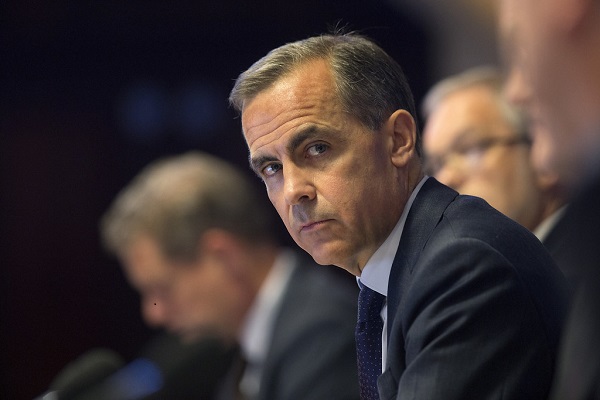
 2025 Federal Election17 hours ago
2025 Federal Election17 hours agoThe Federal Brief That Should Sink Carney
-
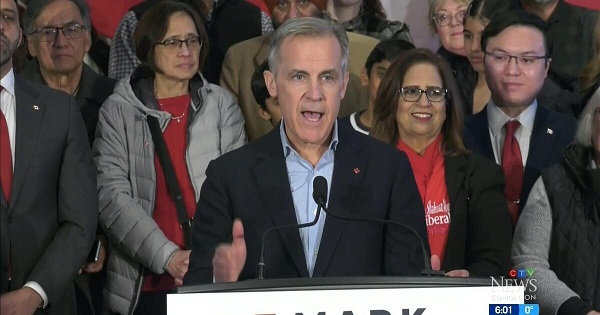
 2025 Federal Election19 hours ago
2025 Federal Election19 hours agoHow Canada’s Mainstream Media Lost the Public Trust
-
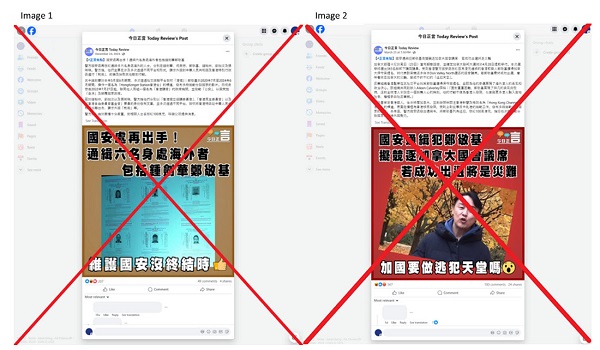
 2025 Federal Election22 hours ago
2025 Federal Election22 hours agoOttawa Confirms China interfering with 2025 federal election: Beijing Seeks to Block Joe Tay’s Election
-
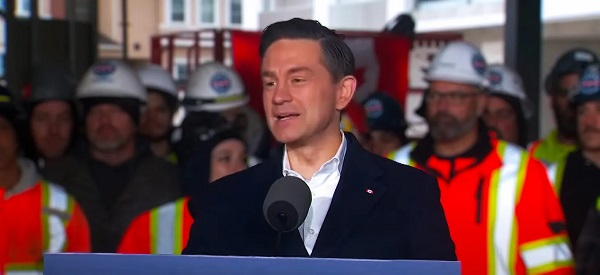
 2025 Federal Election21 hours ago
2025 Federal Election21 hours agoReal Homes vs. Modular Shoeboxes: The Housing Battle Between Poilievre and Carney
-
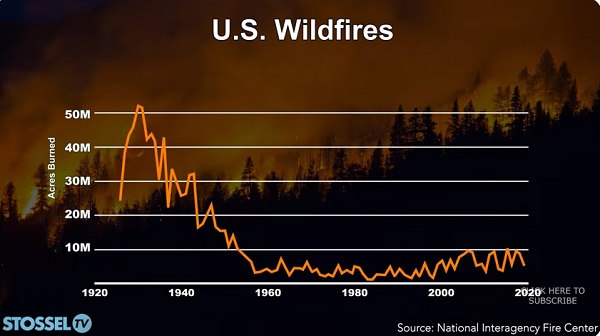
 John Stossel18 hours ago
John Stossel18 hours agoClimate Change Myths Part 2: Wildfires, Drought, Rising Sea Level, and Coral Reefs
-

 COVID-1920 hours ago
COVID-1920 hours agoNearly Half of “COVID-19 Deaths” Were Not Due to COVID-19 – Scientific Reports Journal
-

 2025 Federal Election2 days ago
2025 Federal Election2 days agoPoilievre Campaigning To Build A Canadian Economic Fortress
-

 Automotive2 days ago
Automotive2 days agoCanadians’ Interest in Buying an EV Falls for Third Year in a Row

